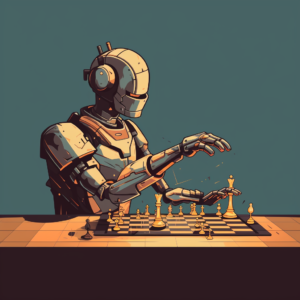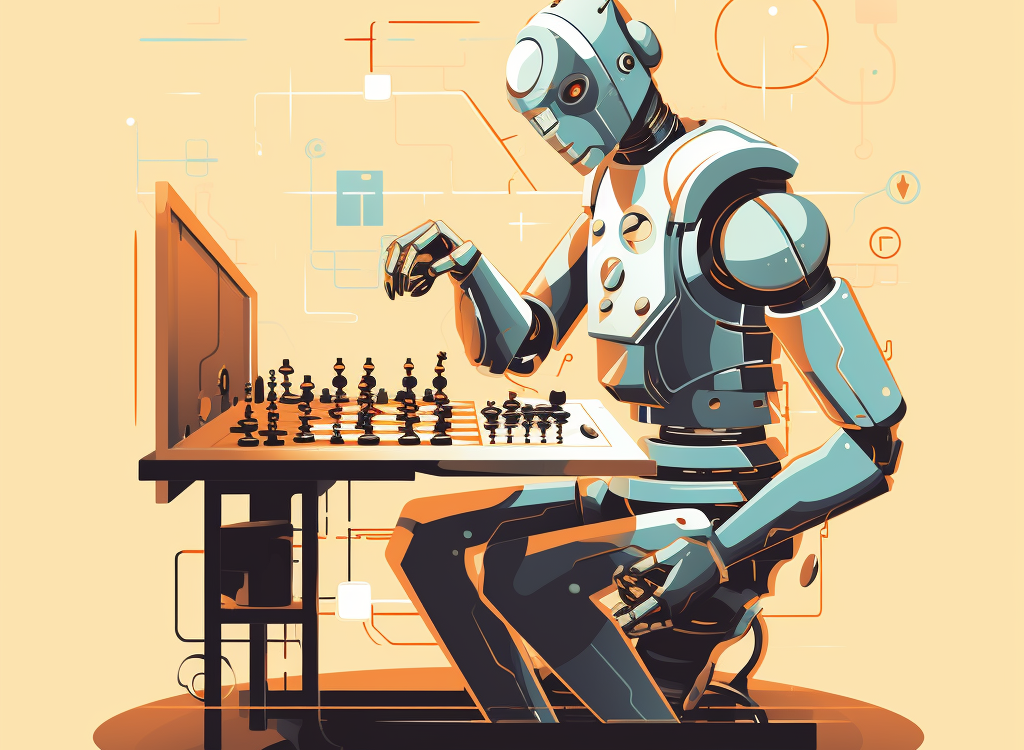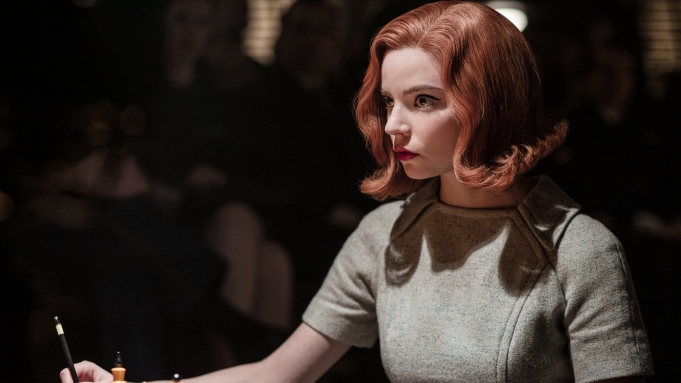As the last pawn moves into place and the final piece falls, one might wonder: does the thrill of a hard-won chess match still hold the same exhilarating joy when your opponent is a machine?
Welcome to the evolving landscape of chess in the age of artificial intelligence (AI). This intricate dance between man and machine is reshaping the centuries-old game, marking a pivotal shift from the secluded nooks of royal courts to the lightning-fast processors of modern computers.
In this exploration, we dive into the intertwined world of AI and chess, where silicon minds challenge the human intellect and the love for the game sparks fascinating technological innovations. We will revisit epic milestones where AI made checkmate history and delve into the ongoing debate surrounding AI’s role in the game.
Our journey will lead us to confront AI’s limitations in interpreting complex visual information, like the unique landscape of a chessboard, and uncover the implications these challenges pose. As we navigate the realm of AI, we’ll examine the enduring significance of chess as a tool for human cognitive development, especially in an era increasingly dominated by automation.
A Brief History of AI and Chess

In the world of chess, every move matters, every strategy carries weight, and every game unfolds as a unique blend of struggle and intrigue. But what happens when your opponent isn’t just an ordinary player? When the calculating mind across the board is a supercomputer, or even more intriguingly, an artificial intelligence?
Our journey begins in the mid-1990s, a time when artificial intelligence was starting to make its mark. The stage was set for one of the most iconic battles of wits: the reigning World Chess Champion, Garry Kasparov, versus IBM’s Deep Blue. This confrontation wasn’t just a match between man and machine. It was a symbolic confrontation that would shape the future of chess and artificial intelligence alike.
In 1997, the unthinkable happened. Armed with raw computational power and the capacity to evaluate 200 million positions per second, Deep Blue managed to outmaneuver Kasparov, securing a landmark victory for artificial intelligence. This was not just a leap in AI technology but also a turning point in our understanding of chess. The game of kings was no longer a human stronghold.
As the new millennium dawned, AI’s journey in chess continued to evolve. The launch of AI systems like Google’s AlphaZero took the fusion of AI and chess to a new level. Unlike its predecessors, AlphaZero wasn’t preloaded with historical games or programmed with established strategies. Instead, it learned from scratch, mastering the game solely through self-play and deep learning. This transformative approach shifted the paradigm, proving that AI could not only emulate human players but also innovate, devise new strategies, and even challenge conventional chess wisdom.
Today, AI has firmly entrenched itself in the chess landscape. It is a virtually unbeatable opponent, an invaluable learning tool, and a source of insightful game analysis. As we marvel at these technological marvels, it’s clear that AI’s journey in chess is far from over.
What are the Implications of AI and Chess?

The fusion of AI and chess isn’t simply a tale of machines conquering a human domain; it’s a dynamic narrative about the transformation of a game cherished by millions worldwide.
AI’s most significant contribution to chess is undoubtedly its role as a relentless tutor and invaluable tool for analysis. AI-powered chess engines, such as Stockfish or AlphaZero, can sift through millions of potential moves, offering players a level of strategic insight that was unthinkable in the pre-digital era. Today, professionals and hobbyists alike can pit their skills against AI opponents, analyze their games in meticulous detail, and learn from their missteps. The result? An accelerated learning curve and a global chess community that’s stronger and more connected than ever before.
However, not all are enthralled by this modern coupling of silicon and strategy. Critics voice concerns that the AI’s dominance might undermine the inherently human aspect of chess. They argue that chess risks transforming from a contest of human intellect into a computational arms race as AI delves deeper into the game. This tension between tradition and innovation ignites debates: is chess still a creative, intellectual endeavor when our moves are guided—or even dictated—by an AI’s calculated suggestions?
While the influence of AI on chess is undeniable, it’s essential to remember the beating heart at the core of the game. It’s not the black and white squares or the intricately carved pieces that make chess captivating—it’s the human minds behind each move, the passionate players who love the game, and the vibrant communities that chess nurtures. As AI continues to leave its mark on chess, it falls upon us, the human players, to balance the scales between tradition and technology and to ensure the game’s enduring spirit remains undiminished.
The Visual Capabilities and Challenges of AI in Chess

When it comes to artificial intelligence, perception is everything—quite literally. The journey of AI in chess is not just a story of processing power and learning algorithms, but also one of sight and understanding.
Currently, AI boasts impressive capabilities in image recognition and creation. This is no small feat; the ability to analyze an image and accurately discern what it represents is a cornerstone of our efforts to replicate human intelligence. This visual prowess is particularly relevant in a game like chess, where the placement of pieces on the board determines everything.
Imagine a high-stakes chess game, each piece meticulously poised on the checkered battlefield. An AI can analyze this visual tableau, identify the position of each piece, and infer the state of the game. The artificial neural networks that power these AIs can be trained to recognize different chess piece types, understand their placements, and even predict possible moves. This all becomes part of the AI’s decision-making arsenal, allowing it to formulate winning strategies.
However, as impressive as it may be, AI’s visual perception is not yet flawless. The complexity of real-world visual information presents unique challenges. For instance, what happens if the chessboard’s image is taken from a skewed angle or under poor lighting conditions? What if a piece isn’t perfectly centered on its square? These seemingly minor inconsistencies can confound an AI, leading it to misinterpret the board’s state.
Moreover, AI still struggles to understand context and make sense of imperfect information—tasks that humans usually manage effortlessly. While a human player might intuitively know that a blurry, brownish blob in a chessboard’s image is probably a misplaced bishop, an AI might not make the same deduction.
We have been exploring the creation of text-to-speech image-generating tools, which currently can be used for creating some truly fascinating and visually stunning results. However, when throwing chess sets into the mix, these tools tend to struggle with the accuracy of the intricacies and details of the chess board and pieces.
These hurdles emphasize that while we’ve come a long way in AI development, we still have miles to go. Understanding context, interpreting unclear visual information, and managing uncertainty are all frontiers that AI has yet to conquer fully.
So, while AI continues to be a game-changer in chess, we’re reminded of the unique complexities of human intelligence. It’s these very complexities that keep our game and creativity fascinating, our strategies fresh, and our love for chess alive. As we continue to enhance AI’s role in chess, we’re not just building better machines—we’re learning more about ourselves and what makes us human.
How Does Chess Help With Human Cognitive Development?

Chess is more than a game—it’s a mental workout. This cognitive challenge continues to inspire and engage players of all ages. As we navigate the sweeping impact of AI on chess, it’s essential to remember the enduring significance of this timeless game in stimulating human intellect.
At its core, chess is a brilliant exercise in strategic thinking. Every move on the chessboard demands careful planning, sharp focus, and an analytical mind. It’s a dance of decisions that engages multiple cognitive faculties, from problem-solving and memory recall to pattern recognition and creativity. Whether you’re plotting your next attack or predicting your opponent’s strategy, chess keeps your mind sharp and active.
Playing chess has been linked with a range of cognitive benefits. It enhances memory, as players remember intricate move sequences and learn from past games. It bolsters concentration, demanding sustained attention across extended periods. Chess also hones our decision-making abilities, pushing us to weigh the pros and cons of every potential move.
But perhaps most importantly, chess is a powerful tool for promoting cognitive resilience. In an age where AI is increasingly performing cognitive tasks for us—whether it’s suggesting the fastest route to work, recommending movies, or even playing chess—engaging in challenging mental activities like chess is more vital than ever. Such pursuits ensure our minds remain active, adaptable, and robust, even in an automated world.
So, whether you’re a grandmaster or a novice, whether you play against humans or machines, remember: every game of chess is a step towards cognitive growth. It affirms the uniquely human qualities that machines, however advanced, cannot fully replicate. As AI continues to shape the chess landscape, let’s cherish chess not just as a game but also as a celebration of human intellect and creativity.
What is the Future of AI and Chess?

As we peer into the chessboard of the future, the influence of artificial intelligence is impossible to ignore. This fusion of code and cognition promises a captivating vision—a chess landscape shaped as much by silicon as by the human mind.
For a novice player, AI can become a great tool for learning and developing your gaming strategy. Every player can now access an AI tutor, offering strategic insights and personalized learning experiences. This AI doesn’t necessarily replace the human opponent; it would augment the player, fostering new levels of strategic mastery and understanding of the game.
With these tools, chess is becoming more accessible than ever. With AI’s capacity to adjust its skill level, anyone could find a perfectly matched opponent. Meanwhile, AI-driven analytics could provide unprecedented feedback on our games, identifying patterns, suggesting improvements, and accelerating our learning.
But no matter how sophisticated AI becomes, it’s crucial to remember one thing—the soul of chess will always be human. Chess isn’t just about who can calculate the most moves ahead. It’s about the shared experience, the friendly rivalries, the tension of a well-matched game, and the camaraderie that emerges around the chessboard.
The AI might analyze the board state, but the human player feels the thrill of a well-planned move unfolding, the dread of a looming checkmate, and the elation of a game well won. These emotional layers of the game, this human element, is something that AI cannot replicate.
So, as we stand on the cusp of an AI-shaped future, let’s remember: in chess, as in life, the human touch truly counts. The future of chess with AI is not about machines replacing humans; it’s about AI enabling us to experience, appreciate, and excel at chess like never before—while we cherish the human spirit that makes the game truly captivating.



